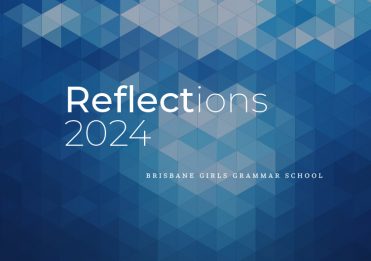I vividly remember the moment I signed up for Facebook. Travelling home from work along the Central line of the London Underground, a Canadian colleague asked if he could ‘add me as a friend’. With a perplexed look on my face, he continued with what seemed absurd remarks at the time: ‘I can tag you in a photo so everyone else can see it. You can “like” something I write. You can let everyone know your location. C’mon, add me!’ Firstly hesitant, I questioned why I would want anyone to know my location or to be ‘tagged’— a word that to me at the time was associated with either spray painting or childhood games. Not wanting to miss out, I signed up; what harm could joining social media cause? I had the perception that Facebook would widen my world and deepen connections with those far away, given that I was living abroad. At the time I was too busy uploading photos of backpacking adventures, hoping for a ‘like’ or two from my family back in Australia, to contemplate if this innovative technology could have any drawbacks.
There is little doubt that the ubiquity of social media platforms and mobile devices has revolutionised the way we all, but particularly teenagers, interact with and perceive the world. The pervasive influence of social media has become an inextricable aspect of adolescent life, shaping communication patterns, social interactions, and self-perception. Yet, despite this influence—and the growing body of evidence on the impact of social media on teens—comprehensive, long-term studies on this subject are currently lacking. But those that do exist, suggest most signs are pointing to danger.
Scientifically, social media use is both fascinating and concerning. The impact of social media on teenage brains is like a digital dance of dopamine and dilemma, and is deeply rooted in neurobiology (Lembke, 2021). Each ‘like’ or comment triggers a rush of dopamine—the brain’s pleasure chemical. Sounds rather good so far! But here’s the twist: dopamine also negatively affects impulse control. As such, the scrolling continues because we are craving that next microdose of dopamine (Crone, 2018).
The brain also undergoes significant changes during adolescence, particularly in the prefrontal cortex and limbic system. While the prefrontal cortex—responsible for decision-making, emotions, and impulse control—is still maturing, the limbic system—which processes emotions and is involved in rewards—is hypersensitive (Crone, 2018). These ‘mismatch years’ between the maturation of the prefrontal cortex and limbic system can make teenagers more susceptible to the allure of social media’s dopamine-driven feedback loop. Teenagers will often take more risks, and have reduced judgement and impulse control. This can have many direct consequences, and further exacerbate conditions such as anxiety, depression, and low self-esteem (Giedd, 2020; Vaingankar et al, 2022).
Academic performance can also be affected by the incessant barrage of digital stimuli on social media. As it can overwhelm the cognitive processing capacities of teenagers, it can lead to both attentional deficits and decreased cognitive functioning. Studies have actually demonstrated reduced grey matter volume and disrupted functional connectivity in the prefrontal cortex of adolescents with elevated levels of social media use (Giedd, 2020), and also emergence of the ‘continuous partial attention’ phenomenon. The rapid-fire nature of scrolling and engaging with multiple forms of media simultaneously has impaired students’ sustained concentration on tasks requiring cognitive effort—the ability to engage in deep, reflective thinking (Firat, 2013).
There is no doubt that social media is altering brain development. But what are smartphones and social media pulling our teens away from? In his new novel, The Anxious Generation: How the Great Rewiring of Childhood Is Causing an Epidemic of Mental Illness, Jonathon Haidt (2024) argues that social media platforms are ‘experience blockers’; enriching activities are getting displaced when teens are spending hours chasing ‘likes’, doom scrolling, and following influencers. They are substituting the richness of real-life connections and friendships with shallow digital communication. Excessive reliance on digital communication platforms may hinder the development of essential social skills, such as empathy, active listening, and non-verbal communication. Face-to-face interactions, which are crucial for emotional regulation and building meaningful relationships, are replaced by superficial online interactions devoid of genuine emotional connection (Ehmke, 2024). These observations may appear old-fashioned, but which middle-aged person doesn’t feel relieved that they didn’t have social media when they were teenagers?
Yet, amidst the concerns, social media does offer avenues for positive growth and connection for teenage girls—if used appropriately. Social media platforms offer opportunities for them to connect (meaningfully), express themselves, and explore diverse interests. They can cultivate communities based on shared hobbies, passions and identities, and showcase their creativity through photos, videos, and written posts (Schønning et al., 2020). Social media can also serve as an advocacy tool, enabling girls to raise awareness about social issues and amplify their voices on matters that are important to them—they can be heard in ways we couldn’t have imagined even 10 years ago. Furthermore, exposure to diverse perspectives and information fosters critical thinking skills and broadens horizons (Vanhavy et al., 2022). In essence, while acknowledging the potential pitfalls, it’s crucial to recognise the transformative potential of social media in empowering and uplifting teenage girls in their journey towards self-discovery and personal growth. It does pose the question though: how can we support teenage girls to express creativity and connect with peers more genuinely?
As parents navigate the complexities of social media’s influence on their teenage daughters, several strategies can help mitigate its negative effects while maximising its benefits. Fostering open communication to establish a supportive and non-judgemental environment is a good starting point, along with setting (and sticking to!) healthy boundaries and time limits (American Psychological Association, 2024). Social media apps are intentionally designed so that teenagers find it difficult to set time limits themselves, so we must not only do it for them but also model appropriate use ourselves. Education about media literacy, and teaching critical thinking skills to help them navigate the digital landscape discerningly, is also essential.
Unrestricted social media use has been likened to handing a Lamborghini key to a learner drive. In the same way that we wouldn’t hand them the keys and let them go, we need to consider how we approach teenage use of social media. There are radical solutions—no access under the age of 16, for example—and others focused more on controlled use. Is there a happy medium that allows teenagers to take advantage of what social media offers, without dangerously impacting their social, mental, and physical wellbeing? Or, do we need to take radical action now, to avoid waiting a few more decades for the conclusive long-term research that social media is, in fact, dangerous for our teenage girls?
References
American Psychological Association. (2023). Health advisory on social media use in adolescence. Https://www.apa.org. Retrieved April 22, 2024 from https://www.apa.org/topics/social-media-internet/health-advisory-adolescent-social-media-use
Crone, E.A., Konijn, E.A. (2018). Media use and brain development during adolescence. Nature, 588 (9). https://doi.org/10.1038/s41467-018-03126-x
Ehmke, Rachel. (2024). How using social media affects teenagers. Child Mind Institute. https://childmind.org/article/how-using-social-media-affects-teenagers/
Firat, M. (2013). Continuous Partial Attention as a Problematic Technology Use: A Case Of Educators. Journal of Educators Online. https://doi.org/10.10.9743/JEO.2013.2.6
Giedd JN. (2020). Adolescent brain and the natural allure of digital media . Dialogues in Clinical Neuroscience, 22(2), 127-133. https://doi.org/10.31887/DCNS.2020.22.2
Haidt, Jonathon (2024). The Anxious Generation: How the Great Rewiring of Childhood Is Causing An Epidemic of Mental Illness. Penguin Press
Lembke, A. (2021). Dopamine nation: finding balance in the age of indulgence. Penguin Random House LLC.
Schønning V., Hjetland GJ., Aarø LE., Skogen JC. (2020). Social Media Use and Mental Health and Well-Being Among Adolescents – A Scoping Review. Front Psychology, 11, 1949. https://doi.org/10.3389/fpsyg.2020.01949
Vaingankar J., van Dam R., Samari E., Chang S., Seow E., Chua YC., Luo N., Verma S., Subramaniam M. (2022). Social Media-Driven Routes to Positive Mental Health Among Youth: Qualitative Enquiry and Concept Mapping Study. JMIR Pediatr Parent. 4, 1. https://doi.org/10.2196/32758.




